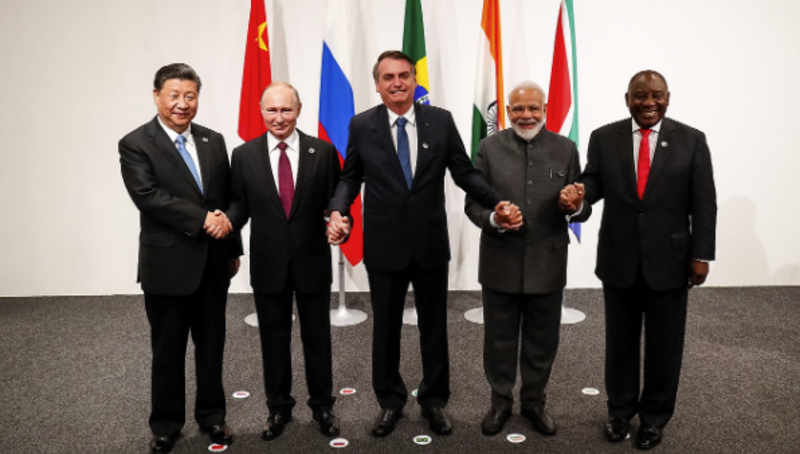Developing countries are teaming up to take on the global monetary order as we know it.
What happened: The BRICS, a five-country partnership between Brazil, Russia, India, China, and South Africa is reportedly pushing ahead with its plans to expand membership and take the dominance of the US dollar down a few notches, per The Globe and Mail.
- Of the 20 countries that have expressed interest in joining BRICS, 13 have formally applied, including Saudi Arabia, Egypt, Algeria, Mexico, Argentina, Nigeria, and Iran.
- BRICS has been around for over two decades, bringing together the world’s biggest emerging economies as the West, its institutions, and currencies reigned supreme.
Why it matters: BRICS could be a vehicle for breaking the dominance of the US dollar in global trade, a long-standing Chinese goal that Russia has also warmed up to as a way to bypass Western sanctions linked to the war in Ukraine. Brazil strongly backs the idea, too.
- BRICS countries are already leaning into their local currencies. Last month, Brazil and China made it easier to settle their foreign trade operations in yuan or reais.
Yes, but: Unlike the G7, though, BRICS are less aligned in terms of political and economic goals, with India and China clashing over a border dispute as recently as 2020. Plus, China’s economy also dominates the bloc, accounting for nearly 75% of the BRICS’ total GDP.
- It’s one thing to speculate about alternative currencies, but when push comes to shove, emerging economies may be less keen on trading US influence for China.
Zoom out: The US dollar is the currency of choice for global trade because of its relative stability, but developing countries are starting to chafe at the influence of American monetary policy on their economies.—SB
